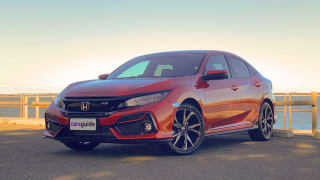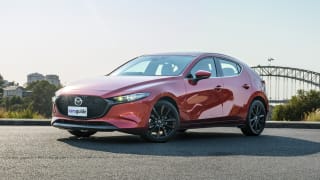The Veloster offered to us was ridiculous. Brand-new (seriously, with 94km on the odometer at pick up, we’d be responsible for running it in) and in a neon shade of yellow, there would be no missing our car in the unit-block car park.
The Veloster has an odd three-door layout, with one coupe-like giant door on the driver’s side and two hatch-like doors on the passenger side.
This is especially notable as Hyundai went to the effort to mirror the entire body-shell for the Australian market, as the Veloster is for predominantly left-hand drive markets.
Initial impressions of the interior are good, too. This top-spec Turbo Premium trim has heated and ventilated leather seats, a heated steering wheel and a panoramic sunroof to go with its over-the-top street appeal.
Immediately familiar is the set-up of all the common Hyundai features, like the leather bound multi-function wheel, which I have been a fan of since it first appeared in the current-generation i30, and the slick-as-ever multimedia suite which is excellent in its operation and connectivity.
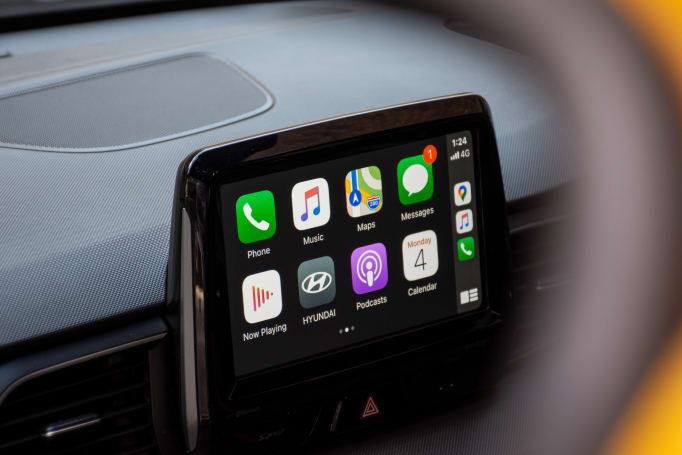
Other wow-factor features include the wireless charging bay and LED headlights, which should come in handy on some of Australia’s poorly lit roads.
Initial impressions were that, while the Veloster is as easy to set up as the i30, visibility isn’t as good out the back (with the Veloster’s tiny rear window), and that the brand has put some effort to make the interior almost as interesting as the exterior.
It’s missing some of the panache of the i30, but makes up for it with character. Little details like the chequered flag pattern etched into the dash, and an abundance of different textures and colours mix it up, mostly for the better.
The following few weeks of Veloster ownership revealed some small issues. Our unit parking spot is very narrow, so the large driver’s door is tricky to open. Then there's the fact that we have a pylon next to our spot that blocks the only rear passenger door. Annoying. It’s a minor livability issue which will influence your choice of parking spot every time you go to a supermarket car park.
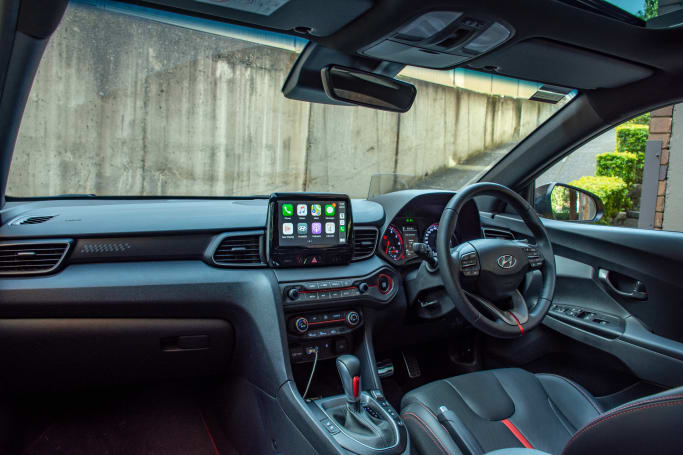
Our driving experience has been full of comparisons, as we've also had direct competitors – the Kia Cerato GT sedan and Honda Civic VTi-S hatch in the garage in the first month.
The Veloster has so far proved to be sporty, but still somehow more forgiving than its Kia Cerato cousin. The steering is firm, artificially so (with a sportier feel imposed by the electric assistance), but nowhere near as noticeable as in the Cerato. The same goes for the suspension, which is not as soft as an i30, but not as firm as the Cerato in GT trim.
The seating position is enhanced by the Veloster’s bucket seats which it gets over the i30, but you still sat much higher in the Hyundai hatch compared to the Honda Civic, which really takes the cake for a low, sporty seating position in this segment.
Thankfully, performance-wise the Veloster is on-par with the Cerato GT (which makes sense as it shares much of its drivetrain) but far better than the Civic’s, especially in the 1.8-litre CVT guise we tested.
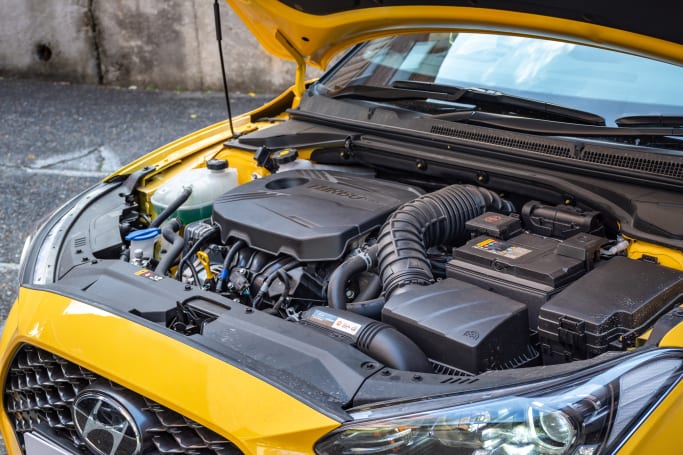
My partner agrees for the most part, saying she prefers the handling of the Civic, adding the lane keep assistance in the Veloster is annoyingly overactive, even inaccurate at times. Otherwise she describes it as a nice controlled drive.
She finds it tough to find the right seating position, though. As a short person (155cm), she says it's hard to get the seat high enough without also being too far forward. The holographic display is particularly difficult for her to see and she reckons the car could do with front parking sensors as she can’t see as far over the dash as I can.
She loves the design though, telling me it’s not just the ridiculous colour, but the funky hatch look that she finds more appealing, even more so than the Civic.
Finally, and certainly on our list of considerations given that we may be considering a new hatch in the near future, is the price.
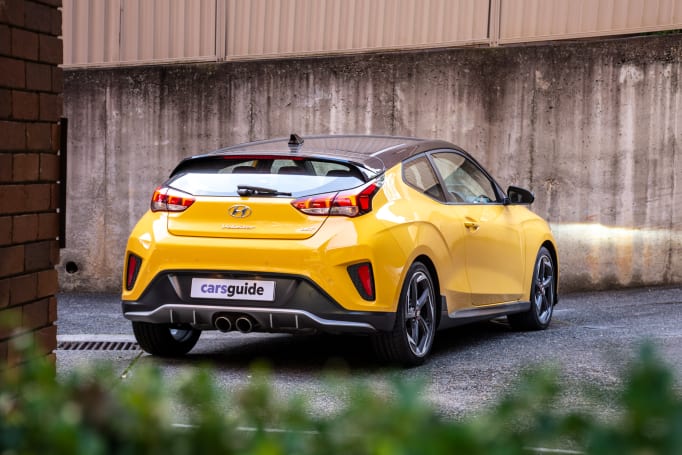
I was a bit taken aback by this car’s MSRP. $42,410! I know it cost Hyundai a lot to bring it here, but that’s only $500-ish off the price of an i30N (which, to be fair, is still manual-only at the time of writing).
I know which Korean hatchback I would rather have in my unit parking spot… There are other things to consider, too. Like, the fact you can get the same powertrain at a near $10,000 discount in the Kia Cerato GT, or Hyundai i30 N-Line, both of which offer a more practical body.
Our first month of testing consisting 577km of mostly urban driving had the Veloster using 8.4L/100km against its claimed combined cycle figure of 6.9L/100km. We’ll chalk that up as not bad at all.
Stay tuned for our next instalment, where we’ll test out its boot capacity, odd rear seats, and draw some more comparisons.
Distance travelled this month: 577km
Odometer: 675km
Average fuel consumption: 8.4L/100km













